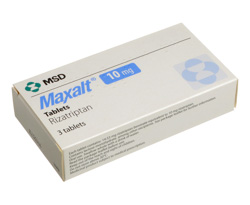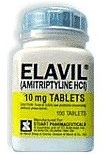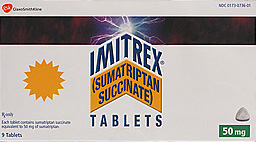Maxalt Medication Overview
Maxalt, chemically known as rizatriptan, is a medication primarily used in the acute treatment of migraine headaches. It belongs to a class of drugs known as triptans or serotonin 5-HT1 receptor agonists. Maxalt works by narrowing the blood vessels around the brain and reduces substances in the body that can trigger headache pain, nausea, sensitivity to light and sound, and other migraine symptoms.
Available Dosage Forms
Maxalt is available in two dosage forms: tablets and orally disintegrating tablets (Maxalt-MLT). The tablet form is available in 5 mg and 10 mg strengths, while the Maxalt-MLT orally disintegrating tablets are available in similar strengths and are designed to dissolve on the tongue without the need for water, which can be beneficial for patients experiencing nausea.
Indications for Use
Rizatriptan is indicated for the acute treatment of migraine attacks with or without aura in adults. It is not intended for prophylactic therapy nor for the treatment of cluster headaches. Rizatriptan should only be used where a clear diagnosis of migraine has been established.
Proper Administration and Dosing
The recommended starting dose of Maxalt is 5 mg or 10 mg. The choice of dose should be made on an individual basis, weighing the possible benefit of a higher dose with the potential risk for increased side effects. If a migraine returns after an initial response, an additional dose may be administered at least 2 hours after the first dose. The maximum daily dose of rizatriptan should not exceed 30 mg in any 24-hour period.
Drug Interactions
Maxalt should not be administered within at least 24 hours of treatment with another 5-HT1 agonist or an ergotamine-containing medication. Use with selective serotonin reuptake inhibitors (SSRIs), serotonin-norepinephrine reuptake inhibitors (SNRIs), and monoamine oxidase (MAO) inhibitors may increase the risk of serotonin syndrome, a potentially life-threatening condition. Concurrent administration with propranolol can result in increased rizatriptan plasma concentrations; a Maxalt dose of 5 mg should be used when it is coadministered with propranolol.
Pharmacokinetics
Following oral administration, rizatriptan is rapidly and nearly completely absorbed. The bioavailability of the tablet form is approximately 40-45%, and the orally disintegrating tablets share a similar bioavailability. Rizatriptan’s mean plasma half-life is about 2-3 hours, and its effects are usually noticeable within 30 minutes of administration. Rizatriptan is predominantly metabolized by monoamine oxidase A isoenzymes and is excreted primarily in the urine.
Adverse Reactions and Side Effects
Common side effects of Maxalt include dizziness, fatigue, dry mouth, and somnolence. Paresthesia, chest pain or tightness, palpitations, and dyspnea are also reported but less common. Some patients may experience pressure or tight sensation in the chest, which is generally transient. However, if this becomes severe or persists, patients are advised to seek medical attention, as these could be signs of a more serious cardiac event. Side effects are generally dose-related; increasing the dose from 5 mg to 10 mg may increase the incidence and severity of side effects.
Special Populations
Rizatriptan should be used with caution in patients with certain conditions such as high blood pressure, obesity, high cholesterol, diabetes, or smoking, which could increase the risk of coronary artery disease. Maxalt has not been extensively evaluated for race differences; however, the pharmacokinetic profile does not differ significantly between Caucasian and Japanese patients. The safety and effectiveness of rizatriptan have not been fully established in pediatric patients under 18 or elderly patients over 65 years of age.
Use During Pregnancy and Lactation
Maxalt falls under Pregnancy Category C, indicating that it should only be used when clearly needed, as animal reproduction studies have shown adverse effects on the fetus. There are no adequate and well-controlled studies in pregnant women. Rizatriptan is excreted in human milk; caution should be exercised when administered to a nursing woman, and a decision should be made whether to discontinue nursing or to discontinue rizatriptan, taking into account the importance of the drug to the mother.
Effectiveness and Clinical Considerations
Clinical trials demonstrate that rizatriptan is effective at relieving migraine pain as well as symptoms associated with migraines such as nausea and sensitivity to light and sound. Efficacy is typically higher in patients treating a migraine at an earlier stage. However, the effectiveness of a second dose has not been shown to be greater than that of placebo in patients who have not responded to a first dose of the medication.
Storage and Stability
Maxalt tablets should be stored at controlled room temperature, between 15-30°C (59-86°F). The orally disintegrating tablets (Maxalt-MLT) should be kept in the blister pack until use to protect from moisture and should not be removed from the blister pack with wet hands. The packaging is not child-resistant, so it should be stored out of reach of children.
Disposal of Unused Medication
Unused or expired Maxalt should be disposed of in accordance with local regulations. Medication should not be flushed down the toilet or poured into a drain. Patients are advised to take advantage of take-back programs for unused medications if available or to consult with a pharmacist or local waste disposal company for more information on safe disposal methods.






Reviews
There are no reviews yet.